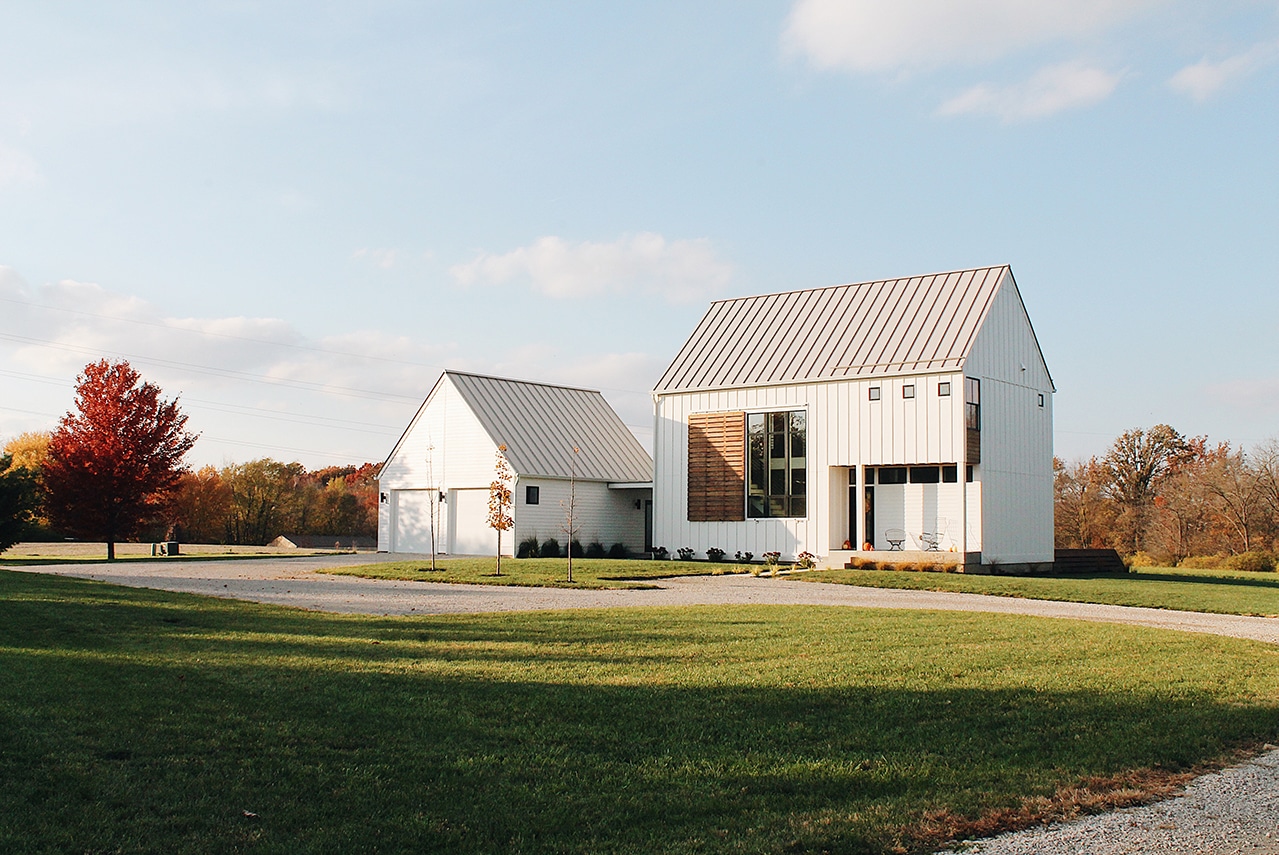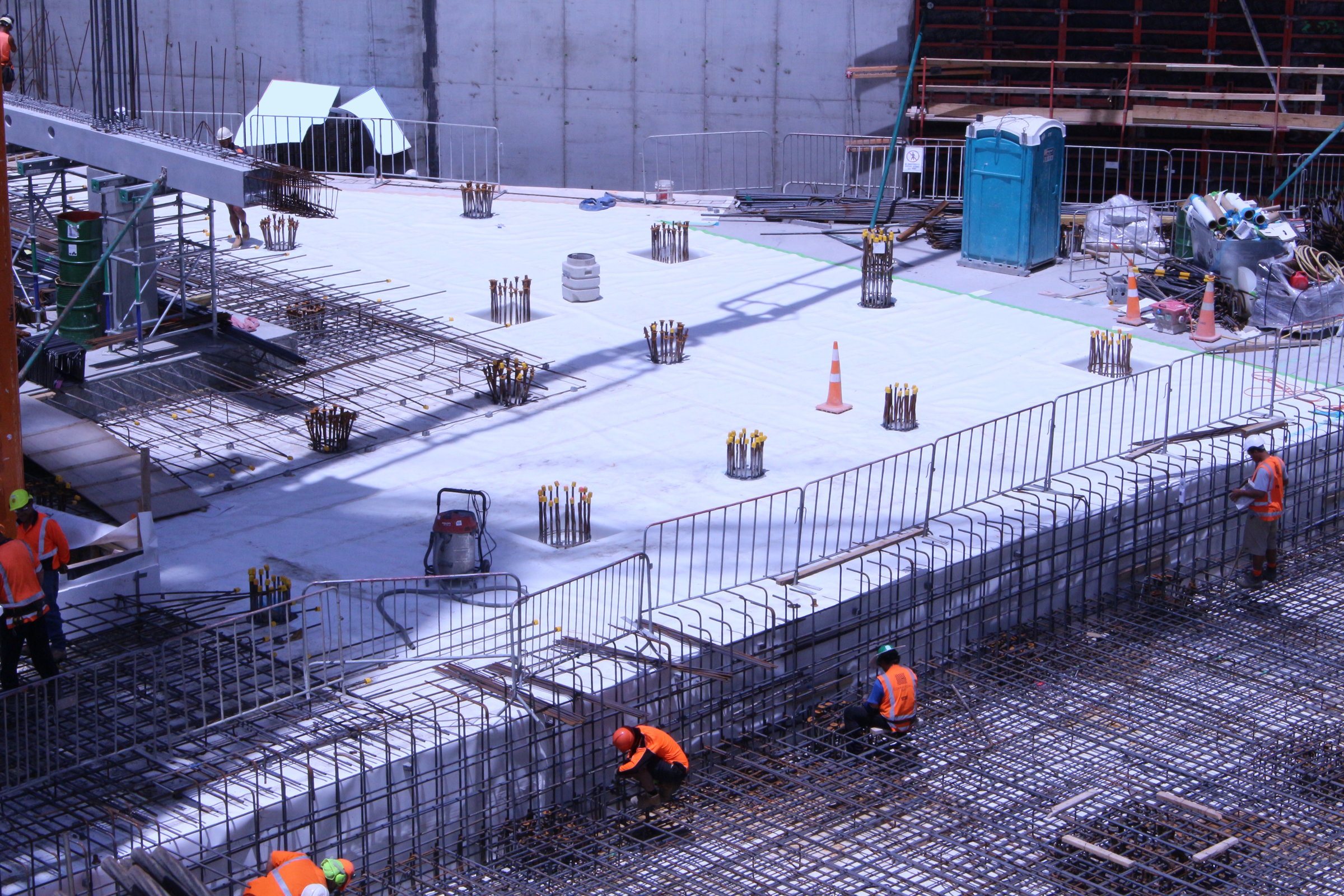Story at a glance:
- The reuse of reclaimed wood and gently used vintage furniture are just two ways that farmhouse design is sustainable.
- Typical small and minimalist builds with a rectangular shape, it’s easy for modern farmhouse design to achieve passive house standards.
- The prefab trend in farmhouse design with highly insulated modular wall panels, enhances its sustainability.
Warm, homey, and rustic come to mind when describing the country farmhouse design aesthetic. Traditionally this is true. But modern and prefab farmhouse designs are unique in their own right, all the while still as sustainable as the traditional farmhouse design if not more so.
Let’s explore the evolution of sustainable farmhouse design through four illustrative examples.
What makes the farmhouse design popular?
Nostalgia for the farming lifestyle of early America—or the look of it—makes the farmhouse design a perennial favorite. The associated feelings conjured up by expansive agricultural fields surrounding you as far as the eye can see bring a sense of security and sheer, sustaining livelihood to those living in farm country or in a home fashioned with a farmhouse design.
Traditional farmhouse design reflects nature’s unadorned rhythms through its basic simplicity and utilitarian functionality, appealing to those looking for a modest and uncomplicated decor.
What is farmhouse design?
Farmhouses are typically small, one-story buildings painted white with a front porch and an open plan interior space. Earthy, neutral tones predominate.
Furniture tends to be vintage and sewn of natural fabrics. Plaid cushions and blankets of deep blues and greens are also commonly strewn on overstuffed furniture.
Advantages of Farmhouse Design
If you’re intrigued by the idea of the farming lifestyle, these advantages will make you love it even more.
Stone and wood predominate as building materials. All-natural and renewable, these were the first building materials in early America. Using reclaimed wood taps into that early tradition since some of it derives from old farmhouses and barns of the early 1800s. Using them accentuates the inherent sustainability of farmhouse designs.
Small structures. Traditional farmhouses were small, asymmetrical, and usually ranch-style. Farming families didn’t need much living space because most time was spent outside working the fields or tending livestock. Less square footage translates into less energy consumption, in keeping with the minimalist character of traditional farmhouse design.
Quaint kitchen features. The farmhouse kitchen was the hub of activity back in the day. A large, deep, rectangular fireclay sink was the dominant design feature. A barn wood island (reclaimed wood, of course) and a Dutch door leading to the backyard added rustic touches. Lots of open shelving and shiplap made of reclaimed wood completed the aesthetic.
Disadvantages of Sustainable Farmhouse Design
Traditional farmhouse design is not for everyone. Here are some disadvantages.
Small size is not enough for big families. Traditional farmhouse designs are small. Their coziness may become uncomfortable—or even confining—if you have several children or frequent house guests.
Open floor plan limits privacy. Close quarters in a traditional farmhouse means it will be difficult to find a totally private space away from others unless you add interior walls.
Examples of Sustainable Farmhouse Designs
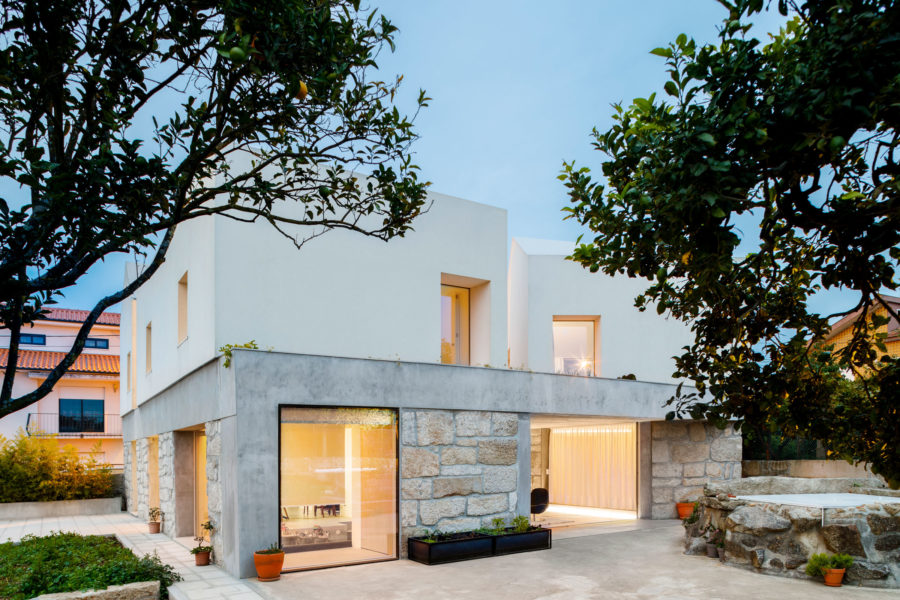
Paulo Merlini Architects reinvented a Portugal farmhouse. Photo by Ivo Tavares Studio
The growing popularity of sustainable farmhouse designs means there are plenty of examples. Here are four of them.
Casa Rio
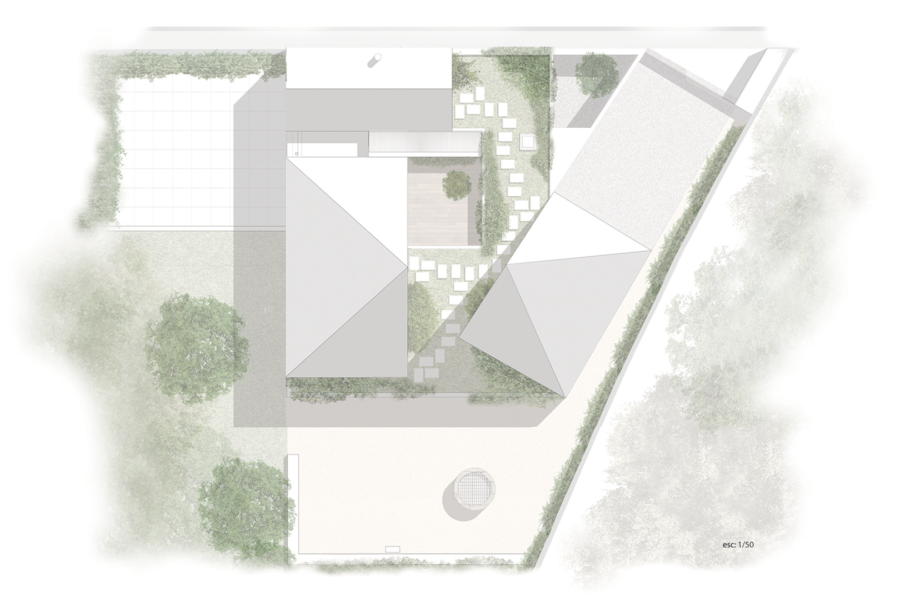
A reimagining of the traditional farmhouse. Drawing courtesy of Paulo Merlini Architects
A remodel of a familial farmhouse, Casa Rio reused the partially rotted eucalyptus beams to cover the floor of the central patio and replaced the original pine floor with treated pine.
“The garden cover was without any doubt the greatest sustainable perk. We strongly recommend the use of this type of solution because, besides guaranteeing a permanent and very comfortable temperature all year, it has an endless aesthetic potential. The possibility of appropriation is completely customizable. With the added value of nature providing us with completely different environments during the various phases of the year,” architect André Santos Silva of Paulo Merlini Architects previously told gb&d.
Calistoga
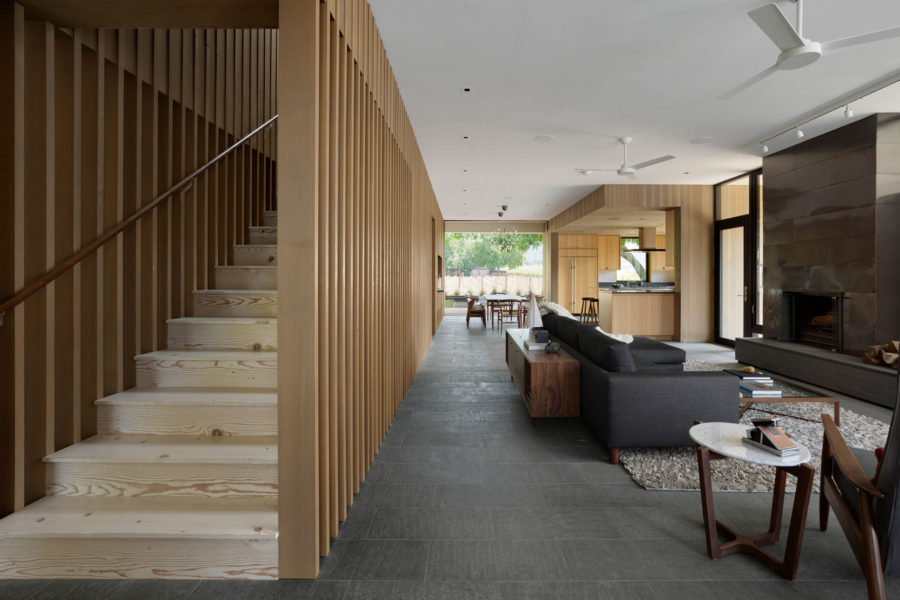
A cedar-clad spine guides the view through this Wine Country farmhouse’s communal spaces to the vineyards beyond. Photo by Matthew Millman
A wine country farmhouse was remodeled using western red cedar. The cedar achieved the designer’s goal, typical of farmhouses, of bridging the indoor with the outdoors. In this case, the cedar-clad kitchen opens onto an outdoor porch and dining area.
“One of the things that’s great about using cedar is that it also helps you develop a human-focused scale to the building,” Mottola says. “It’s very relatable. It doesn’t feel overwhelming at all. In fact it feels quite comfortable. We wrap that material both inside and out. This whole idea of buildings that blur the line between inside and outside really enhances the idea of outdoor living,” says Greg Mottola, lead principal at Bohlin Cywinski Jackson in a previous gb&d article.
South Jersey Passive House
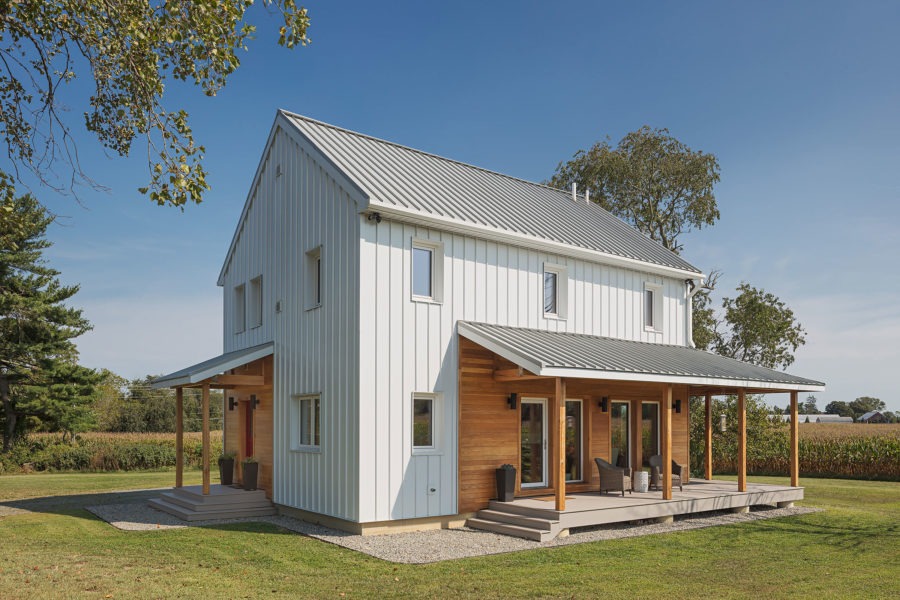
This South Jersey Passive House won the Single Family Honorable Mention in the 2020 PHIUS Design Competition. Photo courtesy of Sam Oberter
On a two- acre plot surrounded by farmland, C2 Architecture built a two-story Passive House that won an honorable mention in the 2020 PHIUS design competition.
This traditional-looking modern white farmhouse features a wraparound porch and highly insulated walls.
Inside, high-tech systems help the home reach passive house standards.
Nixon Road Modern Farmhouse
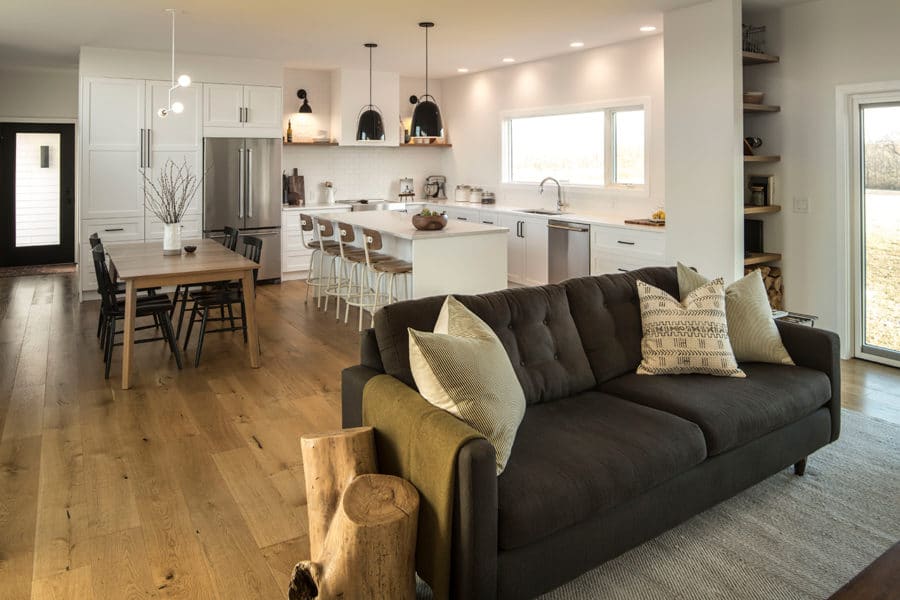
Inside the Nixon Road farmhouse. Photo by Kelsey Johnston
The Nixon Road modern farmhouse in Indiana was also built to passive house standards and features engineered wooden floors.
“The architect, David Rausch, did a nice job of keeping the design simple while providing a unique home that is very pleasing to look at and live in,” Cedar Street Builders owner Dan Porzel previously told gb&d. “The house is a simple two-story rectangle, which helps make it cost-effective and energy-friendly. Solar orientation maximized south-facing widows and minimized them on the west. We kept materials to durable basics, while spending a little extra on the durable metal roof and wood accents.”
The Evolution of Farmhouse Design
Traditional farmhouse design will always have its staunch adherents. Yet tastes evolve, and so will design. From the traditional base has sprung a wide variety of designs such as coastal, French, or modern farmhouse design.
The modern farmhouse design retains some of the traditional forms like lots of exposed wooden beams on ceilings, a stone fireplace, and a free-standing bathtub, for example. However, it adds a contemporary flair by featuring modern wooden floors and appliances. There could be a second floor with a symmetrical exterior.
In the past few years modern farmhouse design has gone modular, featuring pre-built sections fabricated offsite and assembled quickly onsite. Known as prefab, these builds are more cost-effective, energy-efficient, and significantly reduce waste.
Designers and builders team up to create modular modern farmhouse builds that retain the charm of traditional farmhouse design.

